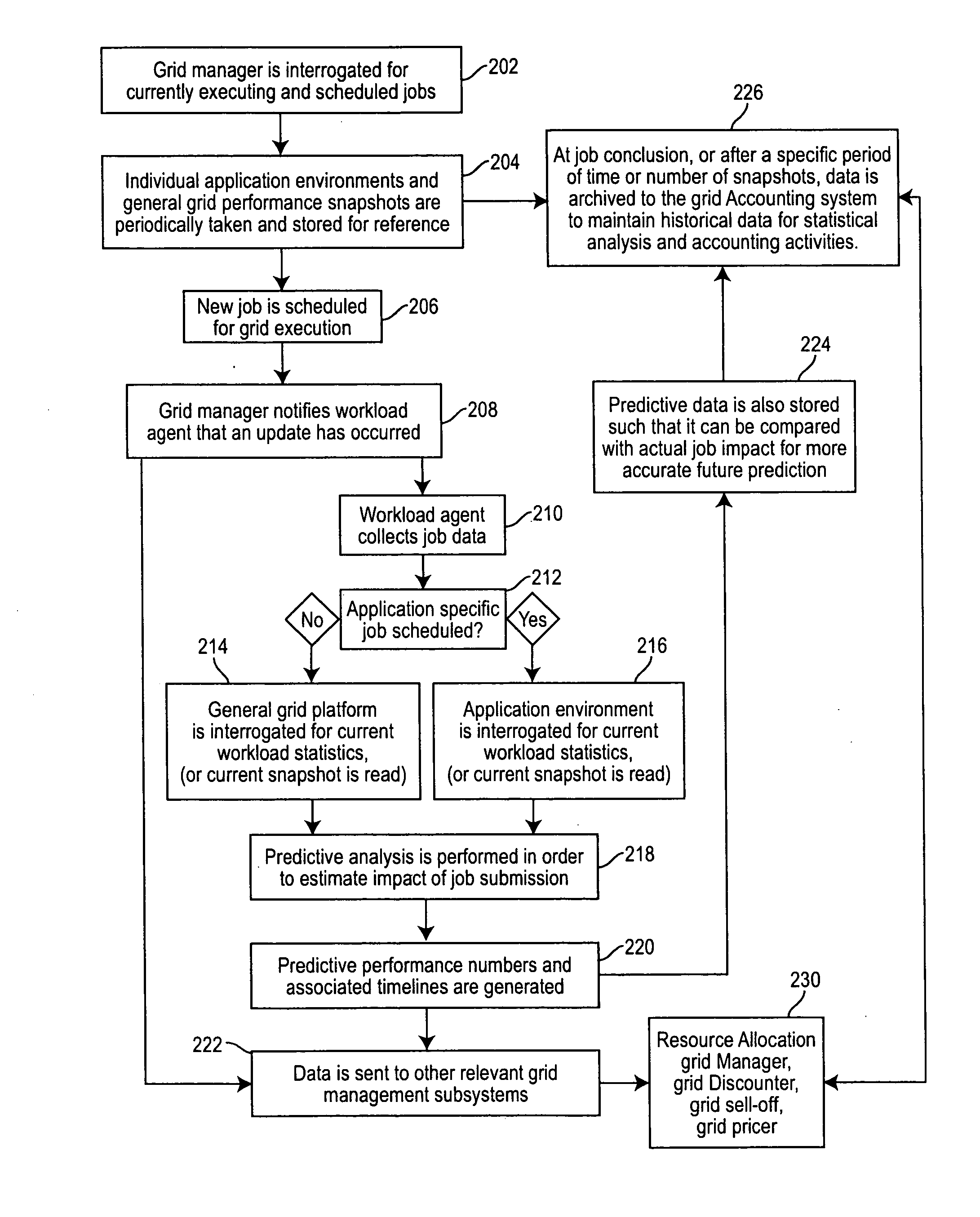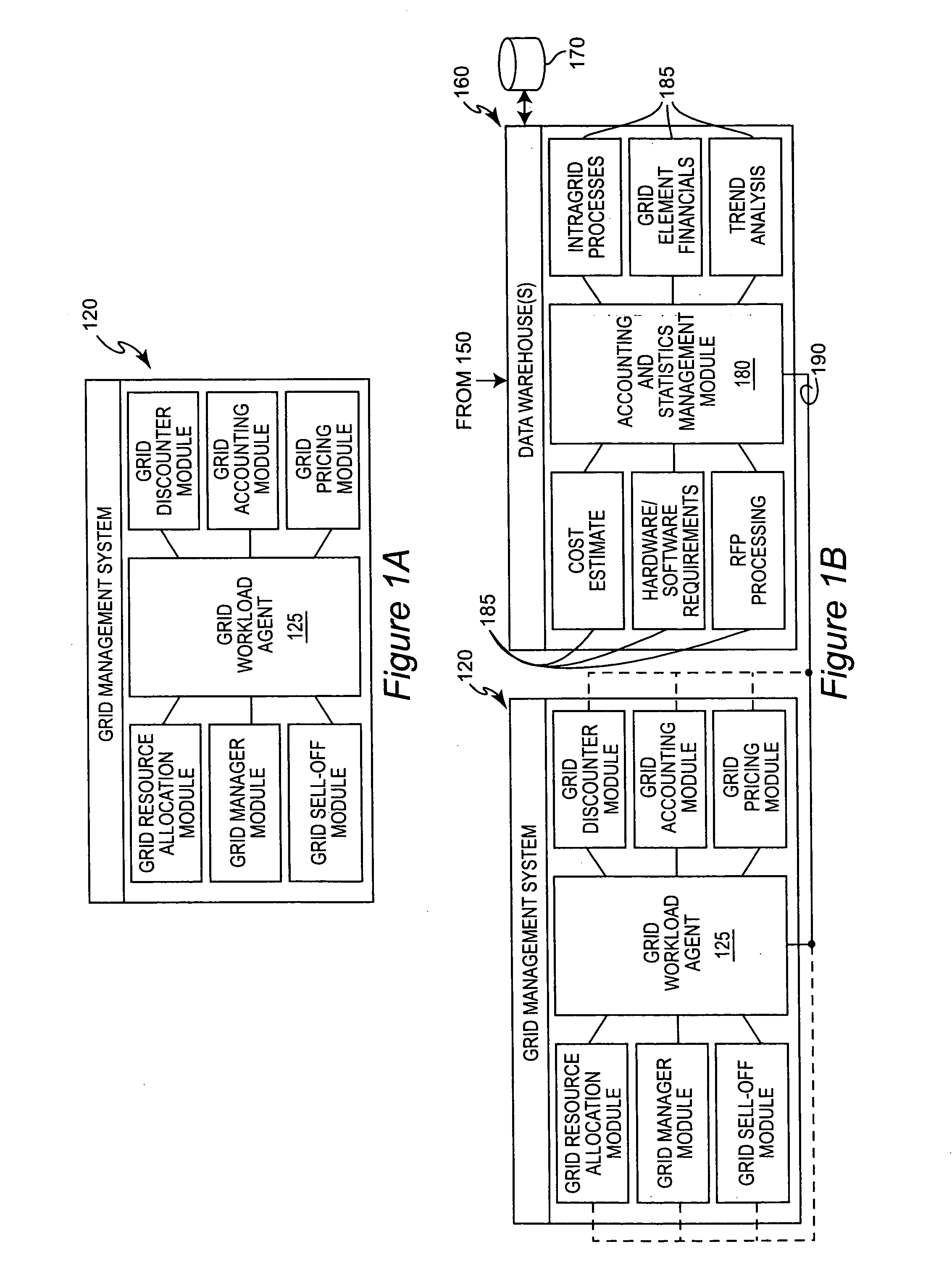Grid computing accounting and statistics management system
a technology of statistics management and grid computing, applied in the field of grid computing environments, can solve the problems of limited capacity, difficult to predict or quantitatively estimate potential gains, and inability to ensure the interconnection of data processors to increase efficiency or speed of response, etc., to achieve accurate and efficient management of computing grids
- Summary
- Abstract
- Description
- Claims
- Application Information
AI Technical Summary
Benefits of technology
Problems solved by technology
Method used
Image
Examples
Embodiment Construction
[0026] Referring now to the drawings, and more particularly to FIG. 1, there is shown a block diagram of the overall system architecture of the grid environment and accounting and statistics management system 100 in accordance with the invention. Those skilled in the art will recognize a substantial similarity of portions of FIGS. 1, 1A and 1B to FIGS. 2 and 5, respectively, of the above incorporated U.S. Patent Application and a comparison of these Figures will be of assistance in conveying an appreciation of the additional facilities and functions and improvements in the functions of the invention of the above-incorporated application which are provided by the present invention. More specifically, as detailed in the above-incorporated U.S. Patent Application, a grid environment 110 includes a grid management system 120 and a virtual resource 130. However, the grid management system 120 of the present invention provides substantial additional functionality by virtue of inclusion of...
PUM
 Login to View More
Login to View More Abstract
Description
Claims
Application Information
 Login to View More
Login to View More - R&D
- Intellectual Property
- Life Sciences
- Materials
- Tech Scout
- Unparalleled Data Quality
- Higher Quality Content
- 60% Fewer Hallucinations
Browse by: Latest US Patents, China's latest patents, Technical Efficacy Thesaurus, Application Domain, Technology Topic, Popular Technical Reports.
© 2025 PatSnap. All rights reserved.Legal|Privacy policy|Modern Slavery Act Transparency Statement|Sitemap|About US| Contact US: help@patsnap.com



